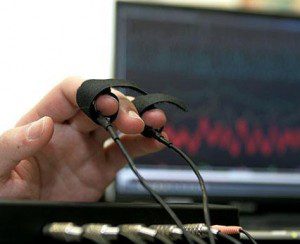 If you ask a person about their sexual activity, illicit drug use, or prejudices against certain others, you may not get a straight answer. Embarrassment, fear of legal repercussions, or a simple desire to look good can create distortions in responses to such questions. Social psychologists have developed many research techniques to get more accurate responses to survey questions. Contemporary implicit measurement techniques, such as the Implicit Association Test, use computer assessment of millisecond-level differences in response time to sidestep respondents’ strategic efforts at self-presentation.
If you ask a person about their sexual activity, illicit drug use, or prejudices against certain others, you may not get a straight answer. Embarrassment, fear of legal repercussions, or a simple desire to look good can create distortions in responses to such questions. Social psychologists have developed many research techniques to get more accurate responses to survey questions. Contemporary implicit measurement techniques, such as the Implicit Association Test, use computer assessment of millisecond-level differences in response time to sidestep respondents’ strategic efforts at self-presentation.
Much earlier, social psychologists used a more primitive method. The bogus pipeline technique, pioneered in the early 1970s, was based on the idea that people might give truer responses if they feared getting caught in the act of lying. The term itself refers to a purported “pipeline to the soul” that happens to be faked.
Academic Writing, Editing, Proofreading, And Problem Solving Services
Get 10% OFF with 24START discount code
The bogus pipeline involved an elaborately theatrical laboratory procedure. The researcher staged a ruse to convince the respondent that a newly developed lie detector was capable of providing highly accurate feedback on the truthfulness of any answer to a survey question. As a result, the respondent might answer truthfully to embarrassing questions because the prospect of being caught in a lie feels worse than any potential embarrassment. Of course, error-free lie detectors do not exist today, and they certainly did not exist in the 1970s. A key component of the bogus pipeline procedure, therefore, was to convince respondents that the impressive-looking machine that they were being wired into was truly effective at lie detection.
This was accomplished by having respondents first complete a supposedly anonymous survey in another lab room, during which their answers were surreptitiously recorded. Later, when wired into the lie detector (which did not actually work), a hidden researcher manipulated the fake machine to produce the “correct” responses as the respondent was asked the same questions as earlier. Once respondents had been “convinced” that the lie detector worked as advertised, the main experiment would proceed, with the main survey questions of interest now posed.
The bogus pipeline works. Its effectiveness was verified across many experiments in which responses collected using the bogus pipeline were compared directly to responses collected using the more traditional “paper-and-pencil” survey method. A study from the early 1970s, for example, revealed racial prejudice to be more common among respondents tested using the bogus pipeline than with paper and pencils. In the 1980s, the technique was widely used to gauge illicit drug use among young adults.
Not surprisingly, however, some condemned the procedure on the grounds that its elaborate deception was unethical, that it was wrong to lie to people to get better survey responses. Largely supplanted today by more effective implicit measurement techniques (one of which goes by the name bona fide pipeline), simpler versions of the technique are nevertheless still used on occasion to shed light on theoretical problems involving implicit versus explicit cognition.
References:
- Plant, E. A., Devine, P. G., & Brazy, P. B. (2003). The bogus pipeline and motivations to respond without prejudice: Revisiting the fading and faking of racial prejudice. Group Processes and Intergroup Relations, 6, 187-200.
- Roese, N. J., & Jamieson, D. W. (1993). Twenty years of bogus pipeline research: A critical review and meta-analysis. Psychological Bulletin, 114, 363-375.
Read More: